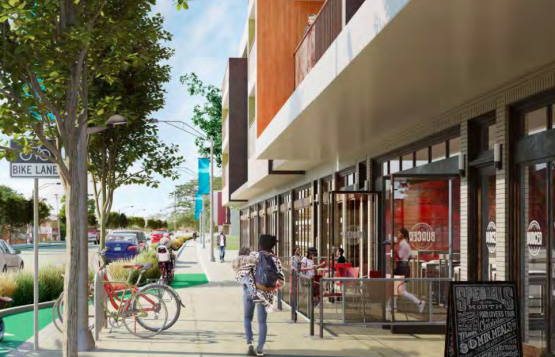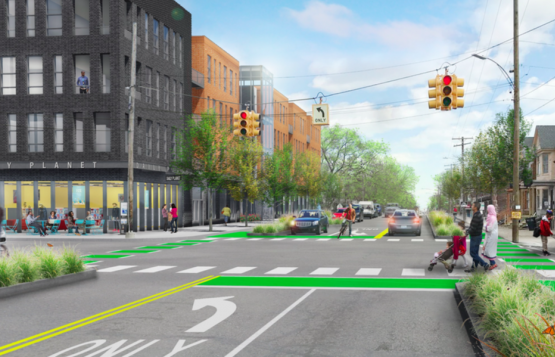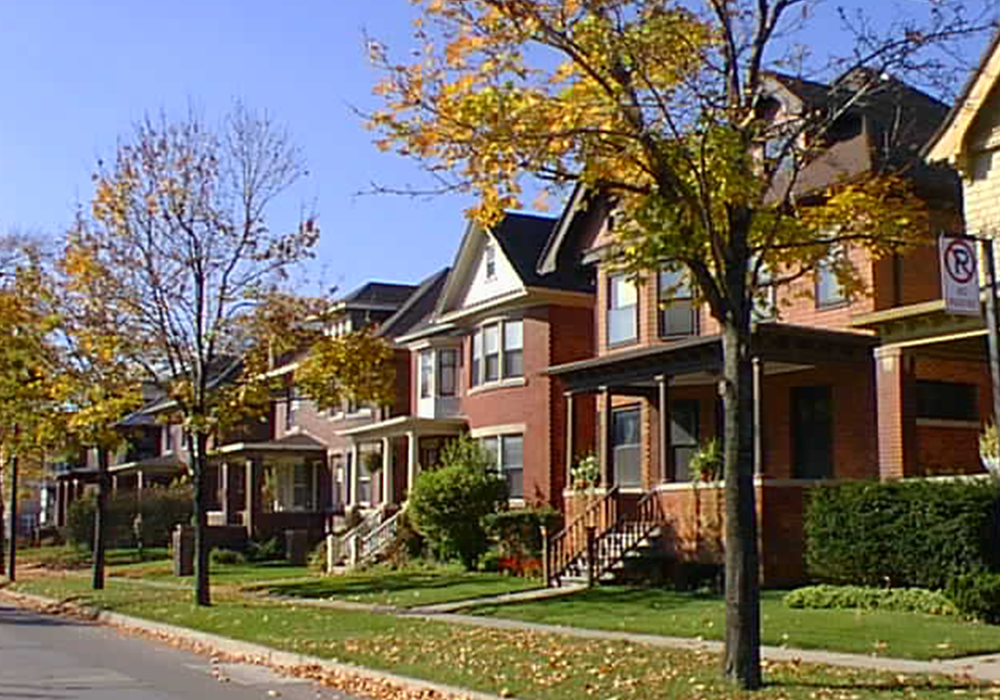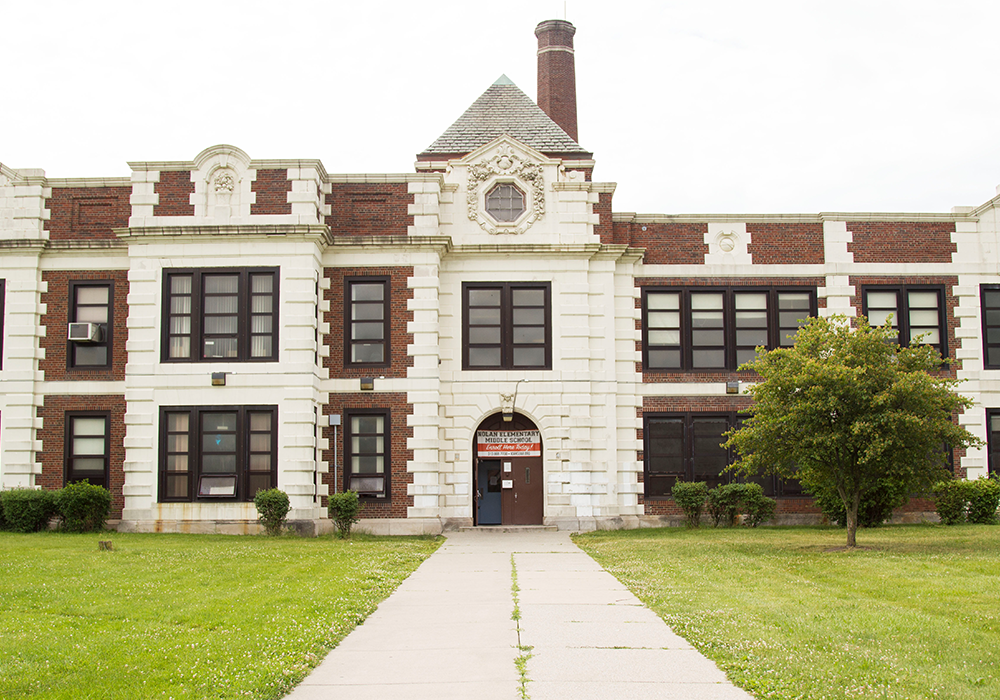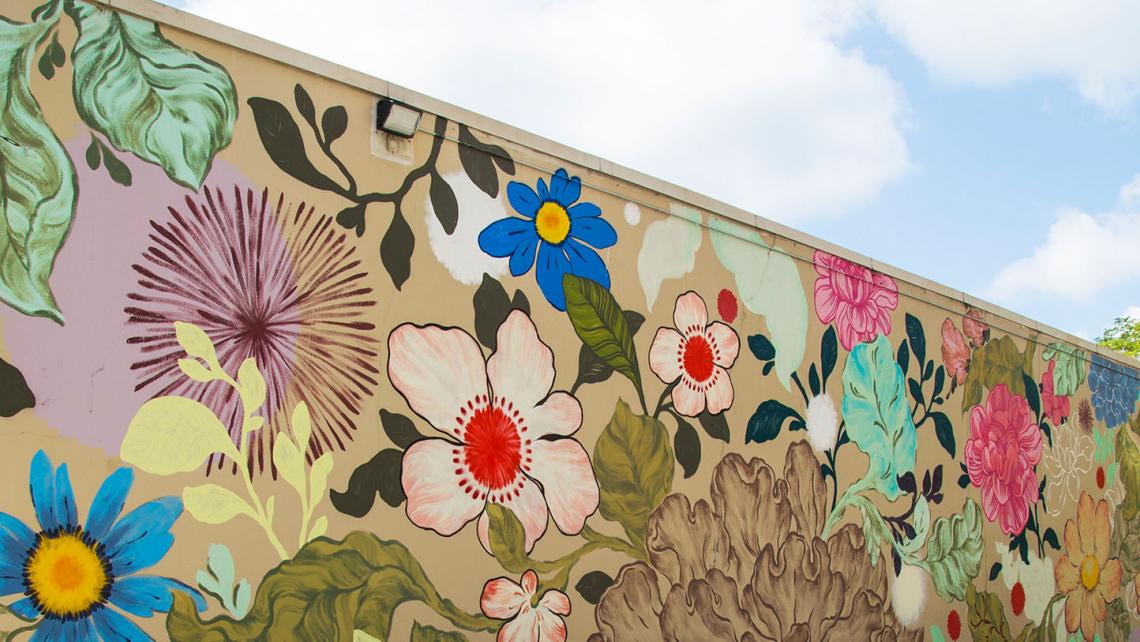
The West Village Historic District is roughly located between Jefferson, Kercheval, Parker and Seyburn avenues. Due to its location just west of Indian Village, the neighborhood was named West Village in the mid-20th century. It was added to the National Register of Historic Places in 1980. West Village is a primarily residential neighborhood containing approximately 275 single- and two-family homes, 30 apartment buildings and 20 commercial structures built between 1890 and 1920. The architectural styles of the buildings in this district include Queen Anne, Tudor, Colonial Revival and Mediterranean Revival houses, in addition to Georgian Revival and Jacobean apartment buildings. Upper middle class homes, apartment buildings and row houses were quickly built in West Village between 1905 and 1925. The neighborhood has since served as a representation of the large-scale growth of Detroit in the early 20th century. Throughout its history, West Village has been home to a number of prominent Detroiters, including Franz C. Kuhn, chief justice of the Michigan Supreme Court; Edwin C. Denby, secretary of the Navy; Theodore Hinchman, president of the architectural firm of Smith, Hinchman and Grylls; and sculptor Julius Melchers. As was the case with many Detroit neighborhoods, racial tensions and white flight following World War II led to the decline of the district. However, the revival of the Indian Village Historic District in the 1970s led to a renewed interest in West Village.




